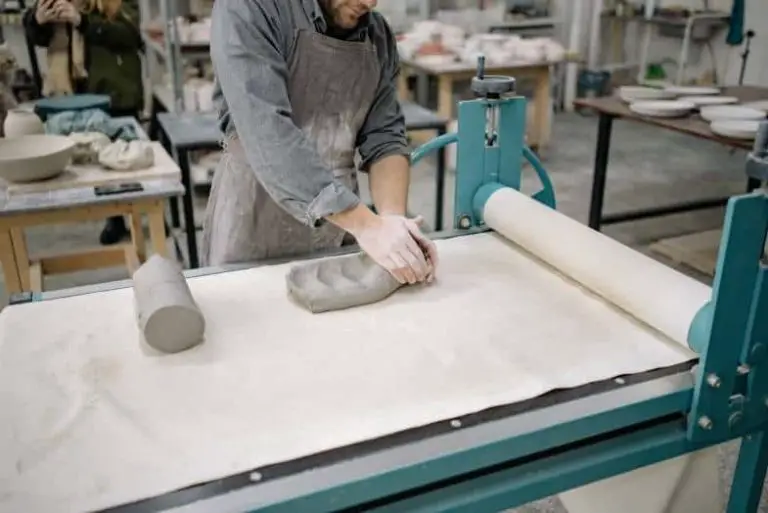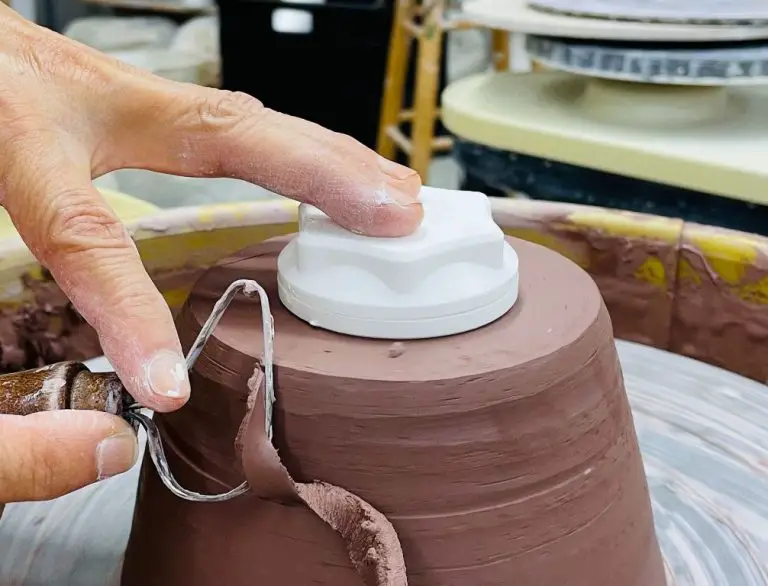Can You Add Water To Das Clay?
What is Das Clay?
Das Clay is an air-dry modeling clay that is made from a mixture of sand, minerals, and resin. Unlike many other clays, Das Clay does not require any baking or firing to harden and cure. It air-dries naturally to a strong, durable finish.
Das Clay is available in a wide variety of vibrant colors like blue, purple, red, yellow, and more. It provides a smooth, non-sticky texture that is easy to shape and mold. Both kids and adults enjoy using Das Clay for arts, crafts, and modeling projects.
The main benefit of Das Clay is that models made from it do not require oven baking or kiln firing. It simply cures and hardens through exposure to air over the course of 24-48 hours. This makes it an excellent choice for beginners and hobbyists who do not want the hassle of additional steps to finish their clay projects.
Das Clay Properties
Das Clay is well-loved for its smooth, pliable texture that makes it a pleasure to sculpt with. Unlike traditional clays that dry out quickly, Das Clay retains its soft and malleable texture for an extended period of time. This gives artists more working time and flexibility with their creations.
The clay hardens naturally when exposed to air over time. Pieces made with Das Clay can sit out at room temperature and will gradually harden and cure without the need for any additional treatment or baking. The curing process usually takes 1-3 days depending on the size and thickness of the artwork.
One of the key advantages of Das Clay is that it can be reused indefinitely if stored properly. As long as the clay is sealed in an airtight container or ziplock bag when not in use, it retains its softness and can be used over and over again for years. This makes Das an extremely economical choice for artists looking to reduce waste and save money on art supplies in the long run.
Adding Water to Das Clay
One of the unique properties of Das clay is that it can be conditioned by adding small amounts of water. This helps keep the clay soft, pliable and workable for molding and sculpting projects.
Adding a little bit of water at a time and kneading it into the clay rejuvenates it and prevents it from drying out and becoming brittle. However, caution should be used not to add too much water. Just 4-6 drops of water per 2 oz of clay is usually sufficient.
If too much water is added, it can make the clay sticky and unusable. Excessive water causes the clay to get mushy and makes it difficult to hold its shape. The clay can become saturated and waterlogged. At this point, it will be necessary to allow the clay to dry out before using it again.
The ideal consistency is clay that is smooth, flexible and responsive to shaping without being excessively tacky. Start with small amounts of water and knead thoroughly between additions to achieve optimal consistency.
Sealing Das Clay
Sealing finished Das clay models isn’t required, but it can help protect and preserve your creations. Unlike air-dry clays, Das does not need a sealer to fully cure and harden. However, applying a clear finish offers some benefits:
– Adds a protective coat to prevent paint chipping or minor surface damage
– Provides a smooth, uniform finish
– Helps maintain the clay’s color vibrancy
– Reduces minor fingerprints and smudges
– Increases durability for regular handling and use
There are a couple options for sealing Das clay sculptures and models:
– Clear acrylic sprays – These are available in matte, satin or gloss finishes. Multiple light coats are recommended for full coverage.
– Clear glazes or varnishes – These can be brushed on and provide a thicker protective coating. Allow each coat to fully dry before adding another.
When applying a sealer, work in a well-ventilated area and avoid oversaturation. Test on an inconspicuous area first to ensure compatibility with any paints or finishes already on the clay. With proper care and sealing, Das clay creations can last for many years.
Storing Das Clay
Proper storage is important for maintaining the quality and usability of Das clay. Here are some tips for storing unused Das clay:
Store in an airtight container – Keep unused Das clay in a sealed plastic bag or airtight plastic container. This prevents the clay from drying out and becoming hard.
Keep away from extreme temperatures – Avoid storing Das clay in very hot or cold conditions. Extreme heat can cause the clay to melt or harden. Freezing temperatures may also affect the clay’s consistency and make it difficult to condition and use.
Store Das clay in a cool, dry location away from direct sunlight. The ideal storage temperature is between 60-80°F. Storing the clay properly will help retain its soft, pliable texture.
Before using Das clay that has been stored for a while, it’s a good idea to recondition it. Knead the clay for a few minutes to restore suppleness if it has hardened during storage.
Cleaning and Maintaining Das Clay
Das clay can be easily cleaned with mild soap and water. Simply knead a small amount of mild liquid soap into the clay until the soap is fully incorporated. Rinse thoroughly under cool running water while continuing to knead and massage the clay. Make sure all soap residue is removed, as any remaining soap can make the clay sticky.
Take care not to soak Das clay for extended periods, as oversaturation with water can impact the clay’s consistency and performance. Instead, only use small amounts of water and soap for spot cleaning as needed. Allow Das clay to fully air dry before sealing and storing.
With proper care, Das clay can be reused many times over. Keeping it clean and avoiding oversaturating with water will help maintain its consistency and playability.
Das Clay Projects
Das Clay is perfect for making all kinds of fun and creative projects. Here are some ideas of what you can make with Das clay:
Figures and Sculptures
Due to its level of detail and ability to hold shape, Das clay works great for sculpting detailed figures, busts, and statues. You can sculpt animals, fictional characters, people, abstract art, and more. Let your imagination run wild!
Jewelry
Make earrings, necklaces, rings, bracelets, brooches, and any other kind of jewelry out of Das clay. The lightweight nature makes jewelry comfortable to wear. You can bake Das clay jewelry in your oven to harden when finished.
Ornaments
Holiday ornaments are easy and fun to make out of Das clay. Sculpt Christmas tree ornaments, menorah decorations, Easter eggs, hearts for Valentine’s Day, snowflakes, and other decorative pieces.
Home Décor
Use Das clay to add some personalized touches around your home. Make vases, bowls, cups, coasters, knick knacks, wall hangings, candle holders, and more. Let your DIY skills shine!
With Das clay, the creative possibilities are endless. Its flexibility and malleability allow you to shape it into any form imaginable. Das clay can bring your visions to life in stunning detail and vivid color. Unleash your inner artist with all that you can make using this magical modeling clay!
Advantages of Das Clay
Das Clay offers several advantages that make it a versatile modeling compound for artists and crafters of all ages. Here are some of the main benefits of using Das Clay:
Air-dries naturally, no baking required – Unlike clay that requires firing in a kiln, Das Clay simply air-dries at room temperature. This makes it very convenient to use, as projects made with Das Clay do not require any special equipment or processing. Once your sculpture or creation is complete, you can simply set it aside to harden and dry out over 24-48 hours.
Available in many colors – Das Clay comes in a wide range of colors, including basic tones like white, black, and terra cotta to bright colors like blue, pink, purple and more. This diversity of hues allows for vibrant and multi-colored Das Clay projects. The colors can also be blended and mixed together.
Smooth texture – Das Clay has a smooth, non-sticky texture even when wet. This makes it easy to mold and shape without sticking to hands and tools. The smoothness allows for fine detail work. When dry, Das Clay retains a lightweight sturdy texture.
Reusable if stored properly – Finished Das Clay creations can be soaked in water to soften again, allowing the clay to be reused. As long as unused Das Clay is tightly sealed in an airtight container, it can be stored indefinitely and reused over and over again. This makes Das Clay very economical.
Disadvantages of Das Clay
While Das Clay has many benefits, there are a few potential drawbacks to be aware of when working with this modeling compound.
One disadvantage is that Das Clay can become sticky if too much water is added. The clay is formulated to reach an ideal texture with just a small amount of water mixed in. Adding excessive amounts of water will make the clay sticky and difficult to handle and manipulate.
Another issue is that Das Clay will harden if not stored properly. Like other polymer clays, Das Clay needs to be kept sealed in an airtight container to prevent it from drying out. If exposed to air for too long, the clay will begin to cure and harden, ruining the usable texture.
Finally, finished pieces made from Das Clay may end up more brittle and fragile compared to other modeling clays. The lightweight nature of Das Clay can make completed projects prone to breaking or chipping easily. Extra care needs to be taken when handling Das Clay creations to prevent damage.
Being aware of these potential downsides allows crafters to take steps to avoid them. With proper water amounts, sealing, and handling, Das Clay’s disadvantages can be minimized to get the full benefit of its many positive attributes.
FAQs
Can you add water to Das clay?
Yes, you can add water to Das clay to make it more malleable if it has dried out. Use a spray bottle or dropper to add small amounts of water gradually. Knead the clay after adding water to evenly distribute the moisture. Be careful not to add too much water or the clay will become sticky. Only add enough water to achieve the desired consistency.
Does Das clay need to be baked?
No, Das clay does not need to be baked. It will air dry naturally at room temperature. Baking Das clay is optional if you want to harden sculptures faster. If baking, follow package instructions carefully. Do not exceed 200°F baking temperature or the clay can burn.
How long does Das clay take to dry?
Das clay will fully dry within 24-48 hours if left sitting at room temperature. Placing it near a fan or heater can speed up drying time. Larger sculptures may take longer to dry completely. Allow adequate drying time before painting or handling delicate Das clay creations.
Can you reuse Das clay?
Yes, Das clay can be reused. Knead together any pieces left over from a project. To reuse clay that has already dried, break it up and add a few drops of water, kneading until it reaches the desired consistency. Reused clay may not bond as well, so it’s best to limit reuse when possible.
How do you store Das clay?
To store Das clay, wrap it tightly in plastic wrap or place it in a sealed container. This prevents it from drying out. Store unused clay in a cool, dry place away from direct sunlight. Properly stored, Das clay can be used for many months.



